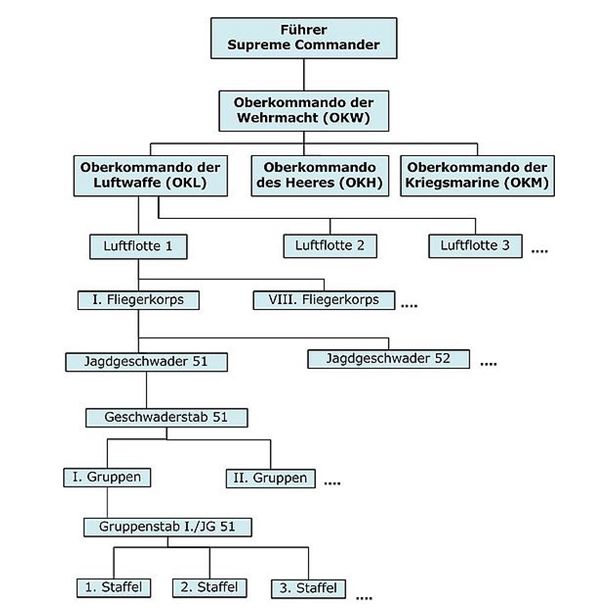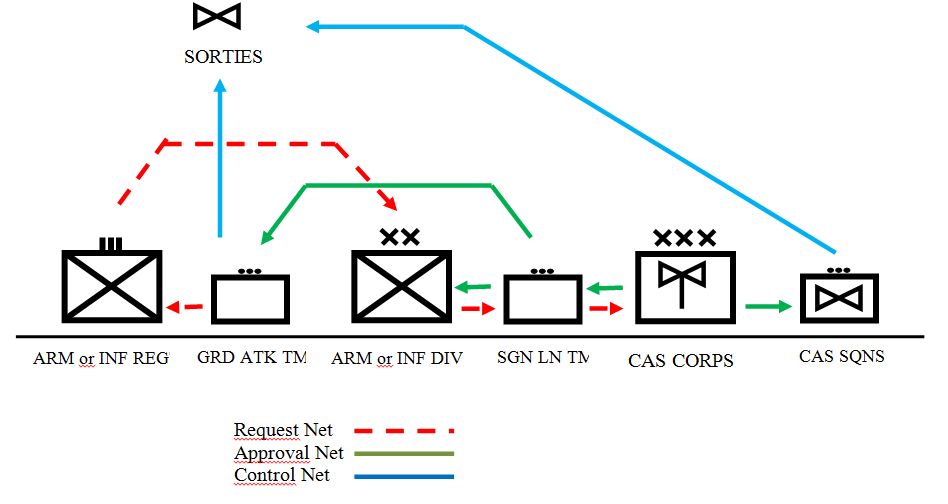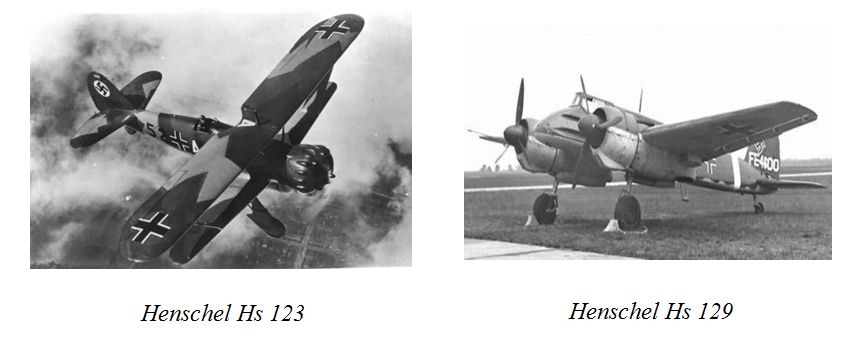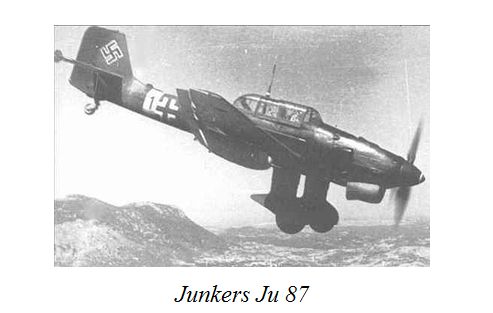
Varga Mihály mk. alezredes
ZMNE KLHTK Dékáni Titkárság
varga.mihaly@uni-nke.hu
Doctrine, organization and weapon systems of close air support of the Luftwaffe in World War II
A Lufwaffe közvetlen légi támogatási doktrínája, szervezete és fegyver-rendszerei a második világháborúban
Resume
The author presents the essence of doctrine, organization, command and control and weapon systems of close air support of Luftwaffe in World War II. He gives an overview about most frequently used aircraft and their tactical-technical features. The article demonstrates that the close air support is one of the most important components of the tactics success and it was since the appearance of the aerial warfare.
Rezümé
A szerző ismerteti a lényegét a második világháborús Luftwaffe közvetlen légi támogatási doktrínájának, a végrehajtásért felelős szervezetnek és a légi vezetési és irányítási rendszernek. A szerző áttekinti a leggyakrabban alkalmazott fegyver-rendszereket, csata és bombázó repülőgépeket, valamint azok jellemzőit. A cikk demonstrálja, hogy a harcászati siker egyik legfontosabb összetevőjének tekinthetjük a csapatok közvetlen légi támogatását a légi hadviselés kezdetei óta.
Introduction
The close air support (generally supporting the land forces from air with fire) one of the most important components of the tactics success and it was since the appearance of the aerial warfare.
According to the definition of close air support (CAS): „air action against hostile targets which are in close proximity to friendly forces and which require detailed integration of each air mission with the fire and movement of those forces” 1
At the beginning of the world war II, only the Luftwaffe had made a theory of deployment and a tactical-technical procedures for direct fire support for ground forces. Other relevant countries, for example the Russia and the Japan also had a written doctrines, but lacked the integrated and trained process required to transform theory into battlefield exercise. Italian and France Air Forces had neither doctrine nor procedures for elaborated close air support. In the case of the USA and Great Britain, before the war dispute and theory leaned towards to obstruct expansion of CAS. Once the Word War II began battlefield requirements forced change.

Figure 1 Luftwaffe Organization Chart (1939-1945)
(Source: wikipedia.com (2011. 07. 19.)
It is important that the German armed forces included the Luftwaffe’s units were experienced previous and during the first years of war in their CAS-system.
The author gives an overview of Luftwaffe visual angle in the article from the theory of the close air support and its practice.
1. Development of close air support doctrine of Germany
The Luftwaffe’s air to ground fire support system evolved from the experience of German forces and soldiers who fought in the Spanish Civil War2. Previous the Spanish experience, German air doctrine and the way of thinking concentrated on Douhet's3 work of strategic attack (achieving final success by the psychological and industrial and finally politically collapse of the enemy country).
This doctrine could not be completely made, however, because German aircraft industry had not completed any strategic ground attack aircraft. Moreover it was the problem because theory of general Douhet diverged to Germany's way of thinking about itself as the army. This conflict was solved when the Spanish Civil War exposed that air strikes against enemy funded the overcoming its resistance.
Because most German air commanders had fought in first great war as a ground unit commander but they were open to the use of air power to achieve objectives of ground forces. An air-ground effort and the close interaction of these forces soon evolved. The doctrinal goal of air power was to assist the advance, or to support the defence of the ground forces that would achieve the national war aim. The developers of doctrine held that a concentration of air power should weight the main attack (or the most threatened defensive areas or cities, industrial objects, etc.) and that for both offensive and defensive operations, a common main point of effort should be designated for the air and ground forces.
Doctrine also stated that, to insure a unity of effort, supporting air forces should be assigned the same objectives as the ground forces. The doctrine did not differentiate between close air support (CAS) and battlefield interdiction (BAI4), as each was believed valuable at different phases in the battle. Just as close air support was valuable for blasting through enemy front line defences during the breakthrough phase, interdiction became valuable at preventing the movement of enemy reserves during the exploitation phase.

Figure 2 CAS request and control system
(Source: Steadman: A comparative look at air-ground support doctrine and practice in World War II)
2. Organizations and activities of ground support
To support its aerial doctrine, the Luftwaffe organized close air support (CAS) squadrons in the late 1930s and employed them in direct conjunction with ground units in field exercises. Considering its achievement of the practice and techniques of the Luftwaffe in Poland, Norway and northern France during 1939 and 1940 established an air to ground model of effectiveness. Organized into air fleets (“Luftflotten”) and air corps (“Fliegerkorps”), the Luftwaffe carefully shielded the integrity of its air units, but it made every effort to perform pre-planned missions in support of the blitzkrieg. The field experience led them to organize larger units capable of performing multiple support roles for the ground force.
By the time of 1940 specific close air support divisions and corps included:
Air reconnaissance units were task-organized, with strategic reconnaissance forces left behind under the Luftwaffe commander's control and tactical reconnaissance aircraft assigned exclusively to the army commanders. Fighter aircraft, which remained under the air commander's control, were available to protect both close air missions and ground forces from hostile air attack. Finally, transport aircraft were added to insure the rapid displacement and resupply of air force units and to resupply forward ground forces.
The flexibility of these multirole organizations was further enhanced by a doctrine which recognized the significance of being able to shift air forces quickly from one operational area to another. This enabled German commanders to concentrate air power at different points at numerous phases in an operation and to take well-timed advantage of unexpected opportunities.
Integration with the ground force was assured by assigning CAS divisions and corps to the ground force conducting the main effort. Operational planning was conducted jointly at collocated headquarters which were well forward and mobile. At the national level, joint planning consisted of designating the common point of the main effort and assigning missions and forces. Army group, army, and numbered Air Force staffs jointly designated objectives and assigned them to specific air and ground forces. At the air and ground corps and division level, detailed planning combined both maneuver and fire support and outlined the type of air missions, targets, and timetables for each phase of the operation.
Hardly ever remaining at one airfield more than a few days, the Fliegerkorps shifted their dive bombers and fighters to attack critical targets on any ground front. The stages of the air attacks included strikes against unfriendly aircraft and enemy airfields, the enemy's communications and main headquarters, and then the enemy's beaten and declining troops.
These forces accomplished very efficiently on the narrow fronts characteristic of ground operations in western front. At the beginning of the attack against the Soviet Union the Luftwaffe again achieved striking successes, but the distances soon proved too great and the force available too small. Besides, the Soviet Air Force rebuilt its strength and countered German blows with telling effect. The Luftwaffe not only was overstretched, but also was required to devote most of its efforts to the close air support of German Army, with a subsequent decline in the effort that could be applied to counter air force and interdiction operations.
3. Main aircraft types of CAS of the Luftwaffe in WWII
Onto the close air support tasks special air to land offensive airplanes and today's one with wording “multirole” bomber, and from time to time recce aircraft were applied.
Dornier Do 17
The Dornier Do 17 was a medium-class bomber fielded primarily by the German Luftwaffe in the years leading up to World War 2. The aircraft saw extensive action in the early phases of the war and played a major role in the falls of Holland, Belgium and France. It was also used in the invasion of the Balkans, Greece and Crete and saw its last major participation in the invasion of the Soviet Union. While Germany never maintained a revolutionary stable of bombers in its inventory aircraft such as the Do 17 formed a major part of the initial German spearheads across Europe. The aircraft was dubbed as the "Flying Pencil" for its thin shape resembling that of a writing instrument. In all, some 2,139 Dornier Do 17 bombers and associated derivatives were completed.
Heinkel He 50
The He 50 was a single-seat dive-bomber and two-seat reconnaissance biplane of 1931, production examples of which went into Luftwaffe service and were exported to China and Japan. Luftwaffe He 50A remained operational on the Eastern Front until 1944. Maximum level speed was 235km/h and armament comprised one forward-firing 7.9mm MG 17 or one rear-mounted MG 15 machine-gun (dive-bomber and reconnaissance types respectively), plus up to 500kg of bombs.
Henschel Hs 123
The Henschel-produced Hs 123 aircraft became the last operational biplane for the German Luftwaffe during World War two. Born from a German requirement for a dive-bomber aircraft as early as 1933, several Henschel Hs 123 test aircraft would fly by 1935 (two would be lost to dive accidents in the process). Five such systems were "tested" by the Condor Legion in the Spanish Civil War - producing refinements in the design which would eventually see combat in the invasions of Poland, Belgium, France, and the Soviet Union with the Luftwaffe.



The success of the Hs 123 with the Condor Legion in Spain offered up some minor modifications, the Hs 123B model was canceled in favor of the developing Junkers Ju 87 Stuka dive-bomber. With the Hs 123 making its appearance in 1936, the Stuka followed in 1937, snuffing out any life from the future development of the Hs 123 in a short amount of time.
During time of Spanish Civil War, at the request of Oberst (later Generalfeldmarschall) Wolfram von Richthofen5, chief of staff of the Legion Kondor, five aircraft had been deployed to Spain as a part of the Legion 'Kondor, intended to be used as tactical bombers. At the start of Operation Barbarossa, the single Gruppe of the Luftwaffe that was dedicated to ground support was II.(Schl)/LG 2, operating 22 Hs 123s (along 38 Bf 109Es). In service use on the Eastern Front, the remaining aircraft had been field-modified with the main wheel spats removed, additional armour and extra equipment fitted as well as mounting extra machine guns and even cannons in under-wing housings.
Henschel Hs 129
The Henschel Hs 129 fulfilled the all-important role of close-support strike aircraft for the germany Luftwaffe throughout World War Two. The Henschel Hs 129 fighter-bomber was built to a 1937 German specification for a twin-engine close-support aircraft with considerable armor protection for pilot and crew and the ability to field twin 20mm cannons at least. The resulting competition left a Focke-Wulf design (the Fw 189C) and the Henschel Hs 129 design as finalists with the nod going to the Henschel firm.
The Hs 129 was by far a perfect aircraft for close-support duty. It was relatively underpowered - even with the twin Gnome-Rhone radial engines - and the cockpit small enough to cram just one person. Visibility was reported to be far from superior though something about the overall design likened the Reichsluftahrtministerium to it. Armament consisted of two nose-mounted MG FF 20mm cannons and two MG 17 7.92mm machine guns. The Hs 129V-1 prototypes gave birth to ten Hs 129B-0 developmental models which, in turn, produced the initial Hs 129B-1 production series. The Hs 129 was immediately fielded to the Eastern Front to take on the divisions of Russian armor in force.
Junkers Ju 87
The Junkers Ju-87 Stuka is one of the best known and most easily recognized German World War II war aircraft. It was an effective precision dive bomber that was successfully used to support rapidly advancing columns of German tanks in their Blitzkreig tasks. "Stuka" is a contraction of sturzkampfflugzeug, the German word for dive bomber.
These aircraft saw action starting in 1937 over Spain during the Spanish Civil War.
As a result of combat experience, the Ju 87 Stuka was further modified with an automatic dive control system, enabling the pilot to predetermine the pull out altitude of a dive. More powerful engines and additional armor for crew protection were also added to the aircraft.
It was equipped with two 37 mm cannons for use against tanks, primarily on the Eastern Front. Other Stukas were used against ground forces in night operations.
Although a successful dive bomber, the Junkers Ju 87 Stuka was an easy, slow target for modern fighter aircraft. It had large losses during attacks against England. It was far more successful when the Luftwaffe initially had air superiority in places like North Africa and the Eastern Front. A total of about 5,700 Junkers Ju 87 Stuka aircraft of all types were produced.
Conclusion
The close air support, than one of the considerable factors of the tactics and operational success, Luftwaffe leaders were recognised early.
They widely made use of their experiences obtained in Spanish Civil War and the ongoing operations of the World War II and the doctrine, organization and weapon systems (aircraft and infrastructure) continuous was developed.
Looked at with a today's eye Luftwaffe’s procedures, its organization, way of thinking about from aerial warfare was exceptionally pointing forward.
References
1AAP-6 (2010) NATO Glossary of Terms and Definitions (STANAG 3680)
2The Spanish civil war (1936 -1939), that the second broke out after a Spanish military coup attempt against a republic. Maintaining the democratic system was increasingly heavier because of the world economic crisis and the inner tenseness’s, but national socialist Germany and the Franco’s could not have been successful without fascist Italy's exterior intervention insurrection. The republican side only Mexico and Soviet Union - international communist brigades helped it apart from this. Onto the driving in of the coup attempt the population was armed (the armouries were taken concerned on much place), then the trade unions and parties organized it teams (militias) you start a revolution on much place, the state disintegrated, in the factories workers' councils, collectives got organized in the villages. The regions started printing own monies, in Barcelona yet the hotels and the barber shops collectivized. The process was not full far, attained 75 percentages in Cataluña. The process the anarchic-syndicalist a trade union, CNT and socialist UGT guided it.
All these were the anarchists against his state integration, but the war forced them to the collaboration with the republic. Four anarchic-syndicalist the government's part was a minister. A row got to an armed clash in 1937 in Barcelona the anarchists (and POUM) and between the republic's soldiery.
Stalin promoted the Spanish left-wing parties' fight since the eruption of the civil war, they Bolshevik was heading all the much under influence to pull over. Not to frighten off the possible allies in the not stood interest of Soviet Union (relatively little sent help because of this), neither to provide a chance to the ideological competition, the revolution bound his help to his driving in practically so. Volunteers arrived in my big mouth from more European countries onto the support of the left-wing strengths, like this from Hungary.
The Spanish civil war was from an army story viewpoint the preparing a world war, where the later super powers tried their crusier tanks. The Italian introduced itself here first CV33-as, the Russian T-26-os, and Panzerkampfwagen dreaded a lot in the later ones the first piece of a series, Panzer I-es. They tried the destructive strength of the area bombing first likewise in Basque Guernica city in 1937. The war ended finally the fallangists with his victory, which one Francisco Franco a general's dictatorial rule system lasting until 1975 delegated.
(Source: history-world.org)
3„General Giulio Douhet (30 May 1869 - 15 February 1930) was an Italian general and air power theorist. He was a key proponent of strategic bombing in aerial warfare. Douhet argued that air power was revolutionary because it operated in the third dimension. Aircraft could fly over surface forces, relegating them to secondary importance. The vastness of the sky made defence almost impossible, so the essence of air power was the offensive. The only defence was a good offense. The air force that could achieve command of the air by bombing the enemy air arm into extinction would doom its enemy to perpetual bombardment. Command of the air meant victory.
Douhet believed in the morale effects of bombing. Air power could break a people's will by destroying a country's "vital centres". Armies became superfluous because aircraft could overfly them and attack these centres of the government, military and industry with impunity, a principle later called "The bomber will always get through". Targeting was central to this strategy and he believed that air commanders would prove themselves by their choice of targets. These would vary from situation to situation, but Douhet identified the five basic target types as: industry, transport infrastructure, communications, government and "the will of the people". (Source: wikipedia.com)
4Battlefield air interdiction involves air attacks that tend to affect ground combat in hours or days, as opposed to close air support (CAS), which has an immediate benefit for friendly forces in direct contact with the enemy.
It is differentiated from CAS in the degree of coordination and control necessary to prevent "friendly fire" casualties, and the extent to which the air, rather than ground, forces target and schedule it. "The dividing line is not the fire support coordination line (FSCL)" on the combat map, but in the focus of the attacks. (Alberts, Donald J. (March-April 1980), "Tactical Air Power within NATO: a growing convergence of views", Air University Review)
5
„Dr.-Ing. Wolfram Freiherr von Richthofen (10 October 1895 in Gut Barzdorf, Silesia – 12 July 1945 in Bad Ischl) was a German Generalfeldmarschall (General Field Marshal) of the Luftwaffe (German Air Force) during the Second World War. Born in 1895 to Prussian nobles, Wolfram grew up in wealthy surroundings. Richthofen achieved his greatest success on the Eastern Front. In particular, he achieved notable success in the Crimean Campaigns during 1942. Despite offering vital tactical and operational support to Army Group South, after the defeat at the Battle of Stalingrad he was moved to the Mediterranean Theatre of Operations, where he commanded Luftwaffe forces in the Italian Campaign. He remained in active service until late 1944, when he was retired on medical grounds. Soon after the capitulation of Germany in May 1945, he was taken prisoner by the United States Army, but died in captivity of a brain tumour on 12 July that same year.” (Source: www.wikipedia.com)